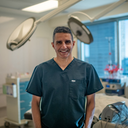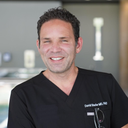I had a breast reduction done back in december and am pleased with the results other than one of my breasts is still open at the inverse T. It is still draining and bleeds fairly easily.
I have been using bactroban cream on the site for several weeks. My PS believes it may be fat necrosis. Just curious how long these types of things could take to heal, and if there are any other options to try and get the wound to heal quicker.
It is healing but EVER so slowly!
Answers (17)
From board-certified doctors and trusted medical professionals
Dr. Richard J. Bruneteau, MD

Dr. Richard J. Bruneteau, MD
Board Certified Plastic Surgeon
Answer
Dr. Paul Vitenas, Jr., MD

Dr. Paul Vitenas, Jr., MD
Board Certified Plastic Surgeon
Answer
Dr. Shahram Salemy, MD, FACS

Dr. Shahram Salemy, MD, FACS
Board Certified Plastic Surgeon
Answer
Dr. Otto Joseph Placik, MD

Dr. Otto Joseph Placik, MD
Board Certified Plastic Surgeon
Answer
Dr. David Shafer, MD, FACS

Dr. David Shafer, MD, FACS
Board Certified Plastic Surgeon
Answer
Dr. Bryan Curtis, MD
Dr. Bryan Curtis, MD
Board Certified Plastic Surgeon
Answer
Dr. David Mattos, MD
Dr. David Mattos, MD
Board Certified Plastic Surgeon
Answer
Dr. John J. Edney, MD
Dr. John J. Edney, MD
Board Certified Plastic Surgeon
Answer
Dr. Tom J. Pousti, MD
Dr. Tom J. Pousti, MD
Board Certified Plastic Surgeon
Answer
More Breast Reduction Questions
See all Breast Reduction Q&AWE SEND PRETTY
EMAILS
What’s trending? Who’s turning heads? Which TikTok myths need busting? We’ve got you. No fluff, no gatekeeping—just real talk. Get our free, unfiltered newsletter.